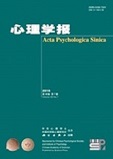Under the framework of Reconsolidation Interference of conditioned fear memory, Prediction Error (PE) has been demonstrated as a necessary condition of memory destabilization. However, the role of PE in destabilizing fear memories of different strengths is unclear. Memory strength was proved to be an important boundary condition of memory reconsolidation; however, explorations of solutions to overcome the boundary are rare. Among factors that are possible to help to overcome the boundary condition, the effects of stress hormones are worth exploring. In this study, we investigated the effects of prediction error on different strengths of fear memory in human participants and the effects of post-reactivation acute stress on the extinction process. The results showed that for weak conditioned fear memories, the spontaneous recovery of fear was significantly inhibited when single PE was involved in the retrieval phase; while for stronger fear memories, reactivation containing a single PE could not destabilize fear memories, and the extinguished memories returned in the memory test on the third day. Furthermore, when the post-reactivation acute stress task was adopted in the enhanced memory condition, the return of fear further increased, compared with the no stress manipulation conditions.




